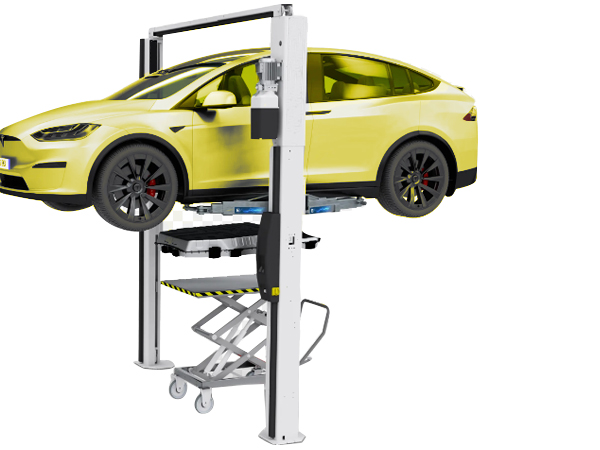
With the widespread adoption of new energy vehicles, traditional car lifts can no longer meet their maintenance requirements. Due to unique features such as battery pack layout, high-voltage systems, and heavier body weight, NEVs demand higher specifications from lifting equipment. This has led to the emergence of the New Energy Vehicle (NEV) Two-Post Car Lift, whose core significance includes:
1. Safe Adaptation to NEV Structures
NEV batteries are typically installed in the chassis, where traditional lifts might cause damage through compression. The NEV Two-Post Car Lift features optimized support points to prevent battery pressure and incorporates enhanced insulation protection to reduce high-voltage electrical risks.
2. Enhanced Load Capacity and Stability
NEVs are significantly heavier than comparable fuel-powered vehicles (e.g., Tesla Model 3 is approximately 30% heavier than conventional sedans). The NEV Two-Post Car Lift offers increased load capacity (3.5-5 tons) to ensure lifting stability.
3. Improved Maintenance Efficiency
With adjustable support pads accommodating different vehicle models and reduced lifting height for easier battery inspection, these lifts significantly shorten maintenance time, meeting the efficiency demands of 4S shops and quick-service centers.
4. Driving Industry Advancement
As NEVs claim increasing market share, traditional equipment will gradually phase out. The NEV Two-Post Car Lift is becoming the new industry standard, facilitating the automotive repair sector's transition toward electrification and smart technologies.
Conclusion: The NEV Two-Post Car Lift represents not just a technical upgrade, but a transformative tool for the industry, laying the foundation for the future of automotive repair markets.